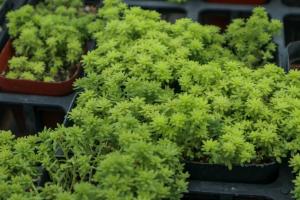Can You Plant Apple Trees in Fall?
Planting apple trees is an excellent investment for your property. However, the timing of planting can influence how well a tree grows, develops roots, and produces fruit. Fall is one of the best periods to install apple trees, but it's vital to understand the reasons behind it and how to plant apple trees correctly to ensure they thrive.
The Advantages of Planting Apple Trees in Fall
Fall is the perfect time to plant apple trees for many reasons. Firstly, the soil temperatures are still warm enough to encourage root growth, but it's not too hot to cause any damage to the young trees. Also, fall's cooler temperatures decrease the water demand for newly planted apple trees, reducing transplant shock and allowing the roots to establish more easily.
Another advantage of planting apple trees in fall is that the trees’ growth slows down after they lose their leaves. This slow growth conserves energy, which the young trees can use to improve their root systems, making them hardier and more resilient for the following spring. It also gives the trees some rest time to prevent them from suffering from heatwaves the following summer.
How to Plant Apple Trees in Fall
Here are some tips to ensure that you plant apple trees successfully in the fall:
1. Select the right apple trees: Make sure that the apple trees you choose are suited to your locality and climate. Also, consider factors such as pollination needs and disease resistance.
2. Preparing the planting site: Apple trees thrive in well-drained soils with pH levels between 6.0 and 7.0. The planting site should receive at least six hours of sunlight per day, and there shouldn't be any competition from nearby trees or shrubs.
3. Dig the planting hole: Dig a hole twice the size of the root system and loosen the soil. Mix organic matter or compost with the soil and create a small mound in the center of the hole.
4. Plant the tree: Place the tree in the middle of the hole on top of the mound so that the top of the root system is at least two inches above the ground. Spread the roots out and backfill the hole with the amended soil.
5. Water: Water the newly planted apple tree frequently but do not overwater. Keep the soil moist but not soaked.
6. Mulch: Apply a layer of mulch to the soil to suppress weeds and retain moisture.
In SUMMARY
In conclusion, planting apple trees in fall is the ideal period as it provides the perfect conditions for root development, reduces water demand and ensures that the tree is hardier and more resilient for the following spring. However, it's crucial to follow the appropriate processes when planting apple trees in fall to ensure that they thrive.

 how many times do yo...
how many times do yo... how many planted tre...
how many planted tre... how many pine trees ...
how many pine trees ... how many pecan trees...
how many pecan trees... how many plants comp...
how many plants comp... how many plants can ...
how many plants can ... how many plants and ...
how many plants and ... how many pepper plan...
how many pepper plan...































